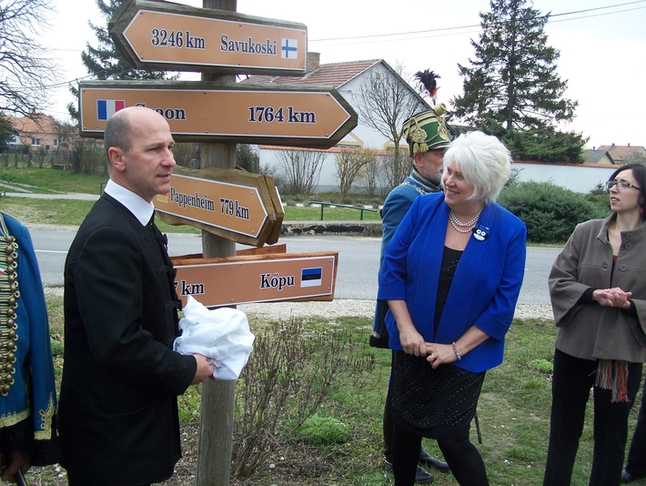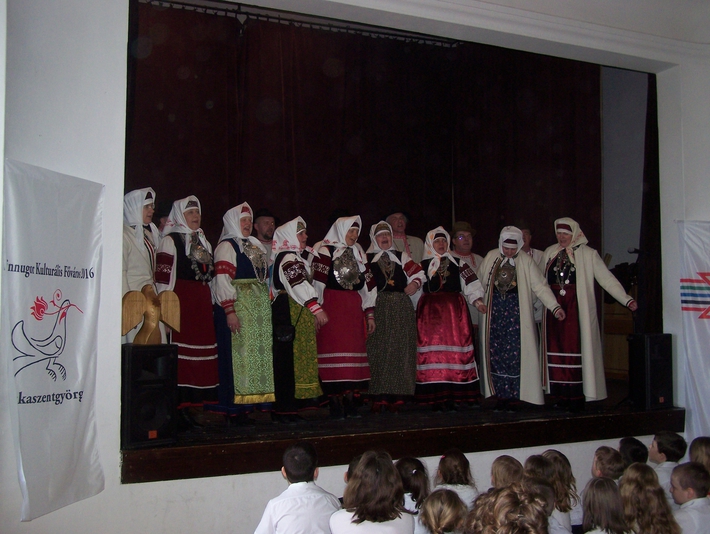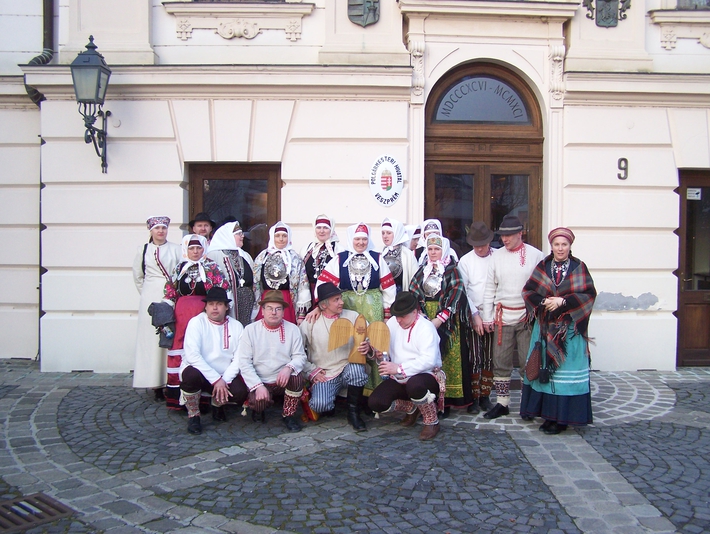The international start of the application for 2017 has been officially announced today in Hungary, in Iszkaszentgyörgy, during the visit of the Estonian foreign minister, Marina Kaljurand. Announcement of the current competition is a testimony to the sustainability and effectiveness of the Finno-Ugric Capitals of Culture programme. “The next winner will be the fifth Finno-Ugric Capital of Culture in line. We really hope the next title-holder will come from a region, where we couldn’t welcome a Finno-Ugric Capital of Culture, yet” – stressed Péter Aranyi, the head of the Finno-Ugric Capital of Culture Programme Bureau.
Who can apply?
For the title Finno-Ugric Capital of Culture 2017 villages, towns, chief towns can apply; expect the capitals of the Finno-Ugric speaker countries, and Moscow. Besides, this year Hungarian municipalities in Hungary and in the Carpathian Basin are also not allowed to apply for the Finno-Ugric Capital of Culture 2017, because currently this region gives two title-holders, Iszkaszentgyörgy and Veszprém. The Finno-Ugric Capital of Culture initiative was initially planned for 4-year-period (2014-2017). During these years the geographic rotation is also taken into consideration, therefore there is a possibility to welcome from all of the four Finno-Ugric regions at least one township wearing the honourable title.
The process of the election
The adjuration of the title goes in two rounds: firstly an international jury of MAFUN choose the best three applications and ensure for them personal presentation. The participants must send their materials till 31 of May, 2016 after this the six-membered jury estimates the applications and till 15 of June names the three best materials. The chosen villages and towns will get a chance to present their conceptions personally in Finland, in Helsinki on 5th of August, in the Balassi Institute. The symbol of this initiative, the handmade wooden bird will be handled by the representatives of Iszkaszentgyörgy, and Veszprém in the last month of the year for the Finno-Ugric Capital of Culture 2017.
Expected languages
The applicants can send their materials in Russian and in English language. The required documents can be downloaded from today, from the official webpage uralic.org. The applications must be sent in PDF-format to the address capitals@uralic.org. The participants should plan at least an annual program, because the future winner can wear the title Finno-Ugric Capital of Culture for the whole year. The next title-holder should also make a logo in English and its native language that can be used in the print materials in 2017.
From where the apps are expected?
Applications for 2017 are welcomed from North Russia (Komi-Permyak Autonomus District, Yamal-Nenets Autonomous Okrug, Khanty-Mansi Autonomous Okrug, Taymyr Autonomus Region, Tomsk Oblast, Krasnoyarsk Krai), from South-East Russia( Mari Republic, Mordovina, Republic of Bashkortostan, Tatarstan, Kirov Oblast, Sverdlovsk Oblast, Nizhny Novgorod Oblast), and from North-Western Region of the Finno-Ugric World (Estonia, Finland, Sweden, Norway, Latvia, Karelia, Leingrad Oblast, Tver Oblast, Vologda Oblast and Murmansk Oblast).
International jury
The decision-making body consists the current president of MAFUN, Käbi Suvi; communication director of Obinitsa, Annela Laaneots (Estonia); the former vice-president of MAFUN, Svetlana Kolchurina (Russia) and the nenets folk researcher of the University of Helsinki, Karina Lukin dr. (Finland). The project coordinator of Iszkaszentgyörgy, Daniel Waliduda and the president of the Finnish-Hungarian Association of Veszprém, András Szoboszlai is also seated in the jury.
Hungary plays main role in 2016
“Finno-Ugric Capitals of Culture is an initiative of MAFUN – Youth Association of Finno-Ugric Peoples – with the objectives to strengthen common identity of kindred Finno-Ugric and Samoyedic peoples, to raise awareness of Finno-Ugric and Samoyedic peoples and languages and the Uralic language family, and to stimulate cultural, economic and civic development on a local level” – underlined Péter Aranyi, the head of the Finno-Ugric Capital of Culture Programme Bureau. First-ever Finno-Ugric Capital of Culture was Udmurtian village Bygy in 2014. It was followed in 2015 by Seto village, Obinitsa and this year the Hungarian village, Iszkaszentgyörgy, plus the chief town, Veszprém can wear the title Finno-Ugric Capital of Culture 2016. Both municipalities are situated in Hungary, in the “Region of the Kings”.
International attendance
During the past years the programme has received wide coverage both within and outside the Finno-Ugric world. Last year Finno-Ugric Capital of Culture was acknowledged during 30th Session of Human Rights Council in Geneva, where the previous title-holder, Obintisa had also a chance to introduce the culture of Setos. It is also showing the strong attendance of the initiative, that this year on the closing ceremony of Obinitsa, the Estonian president, Toomas Hendrik Ilves also participated, where the handmade wooden bird was handled to the representatives of Iszkaszentgyörgy and Veszprém. “It is also a great success that Bygy had at least 10 000 visitors in 2014 and Obinista was visited more than 25 000 people last year due to the Finno-Ugric oriented programs” – stressed Péter Aranyi, the head of the Finno-Ugric Capital of Culture Programme Bureau.



Write first comment